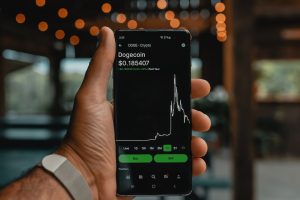Exploring the Different Types of Margin in Forex Trading
Margin is a crucial concept in forex trading that allows traders to enter larger positions than their account balance would typically allow. It is essentially a loan provided by the broker to the trader, enabling them to leverage their trades and potentially increase their profits. However, margin trading also carries risks, as losses can exceed the initial investment. Therefore, it is essential for forex traders to understand the different types of margin in order to make informed trading decisions.
1. Initial Margin:
The initial margin, also known as the deposit margin or the minimum margin, is the minimum amount of funds required by the broker for a trader to open a position. It is a percentage of the total value of the trade and serves as a security deposit to cover potential losses. The exact percentage varies depending on the currency pair and the broker’s requirements. For example, if the initial margin requirement is 1%, and a trader wants to open a position worth $100,000, they would need to deposit $1,000 as the initial margin.
2. Maintenance Margin:
The maintenance margin, also known as the variation margin or the minimum maintenance margin, refers to the minimum amount of funds required to keep a position open. If the account balance falls below the maintenance margin level, a margin call is triggered, and the trader must either add additional funds or close the position to avoid liquidation. The maintenance margin is typically lower than the initial margin, but it is essential to monitor the account balance to prevent margin calls and potential losses.
3. Used Margin:
The used margin refers to the amount of funds that is currently being used to maintain open positions. It is essentially the sum of the initial margin requirements for all open trades. As the value of the trades fluctuates, the used margin will also change, and this affects the available margin.
4. Available Margin:
The available margin, also known as the free margin, is the amount of funds available for a trader to use for new trades. It is calculated by subtracting the used margin from the account balance. Forex traders must keep a close eye on the available margin to ensure they have enough funds to cover potential losses and avoid margin calls.
5. Margin Level:
The margin level is a percentage that compares the equity (account balance plus or minus any unrealized profits or losses) to the used margin. It is calculated by dividing the equity by the used margin and multiplying by 100. A high margin level indicates that a trader has a good amount of cushion against potential losses, while a low margin level suggests a higher risk of margin calls.
6. Leverage:
Leverage is closely related to margin and is expressed as a ratio, such as 1:100 or 1:500. It determines how much a trader can borrow from the broker to open larger positions. For example, with a leverage ratio of 1:100, a trader can control a position worth $100,000 with just $1,000 of their own funds. While leverage can amplify profits, it also amplifies losses, and traders should use it responsibly and with careful risk management.
In conclusion, margin is an essential concept in forex trading that allows traders to enter larger positions than their account balance would typically allow. Understanding the different types of margin, such as initial margin, maintenance margin, used margin, available margin, margin level, and leverage, is crucial for effectively managing risk and making informed trading decisions. Forex traders should always consider their risk tolerance, utilize proper risk management techniques, and closely monitor their margin levels to avoid potential losses and margin calls.





